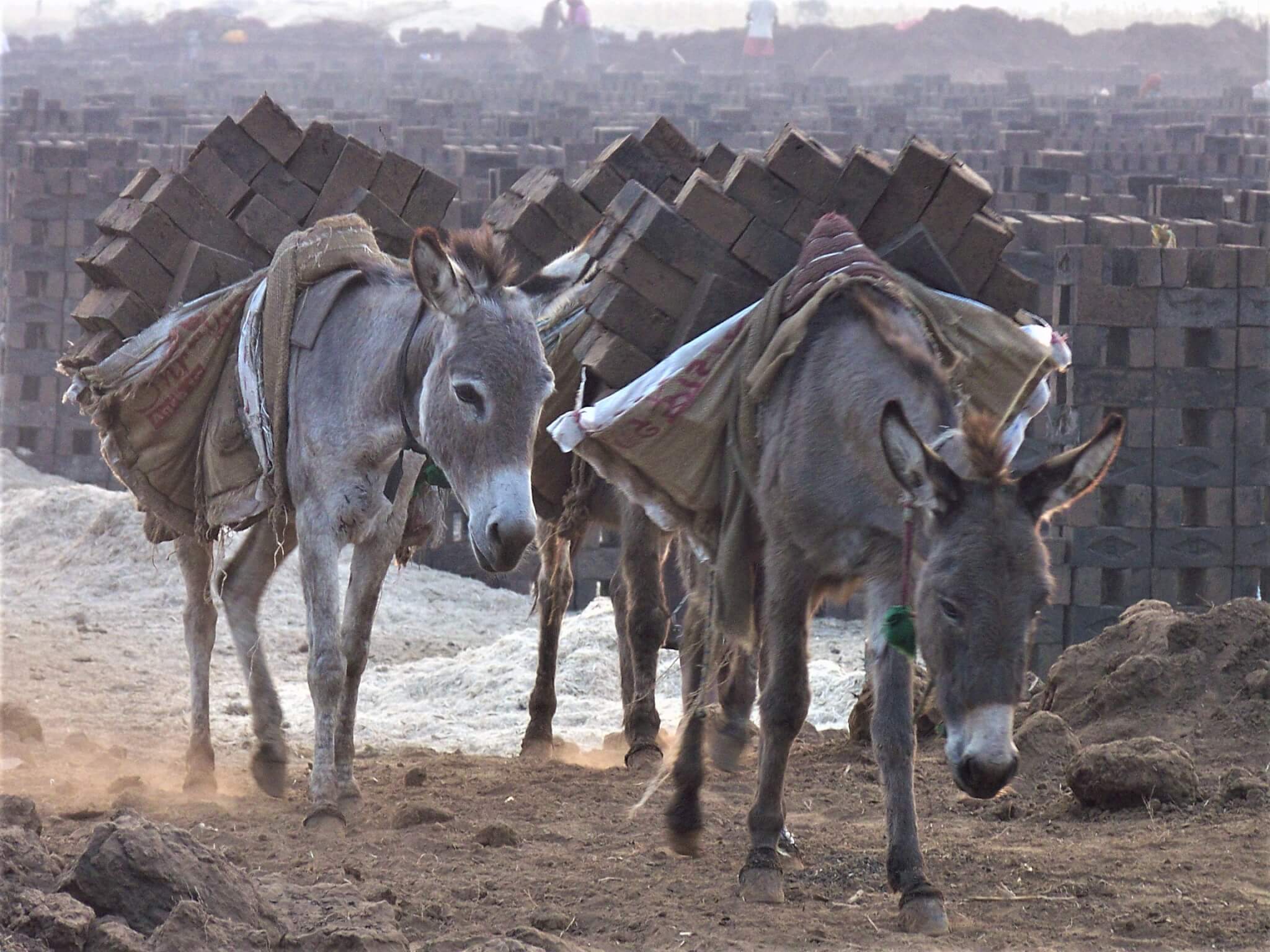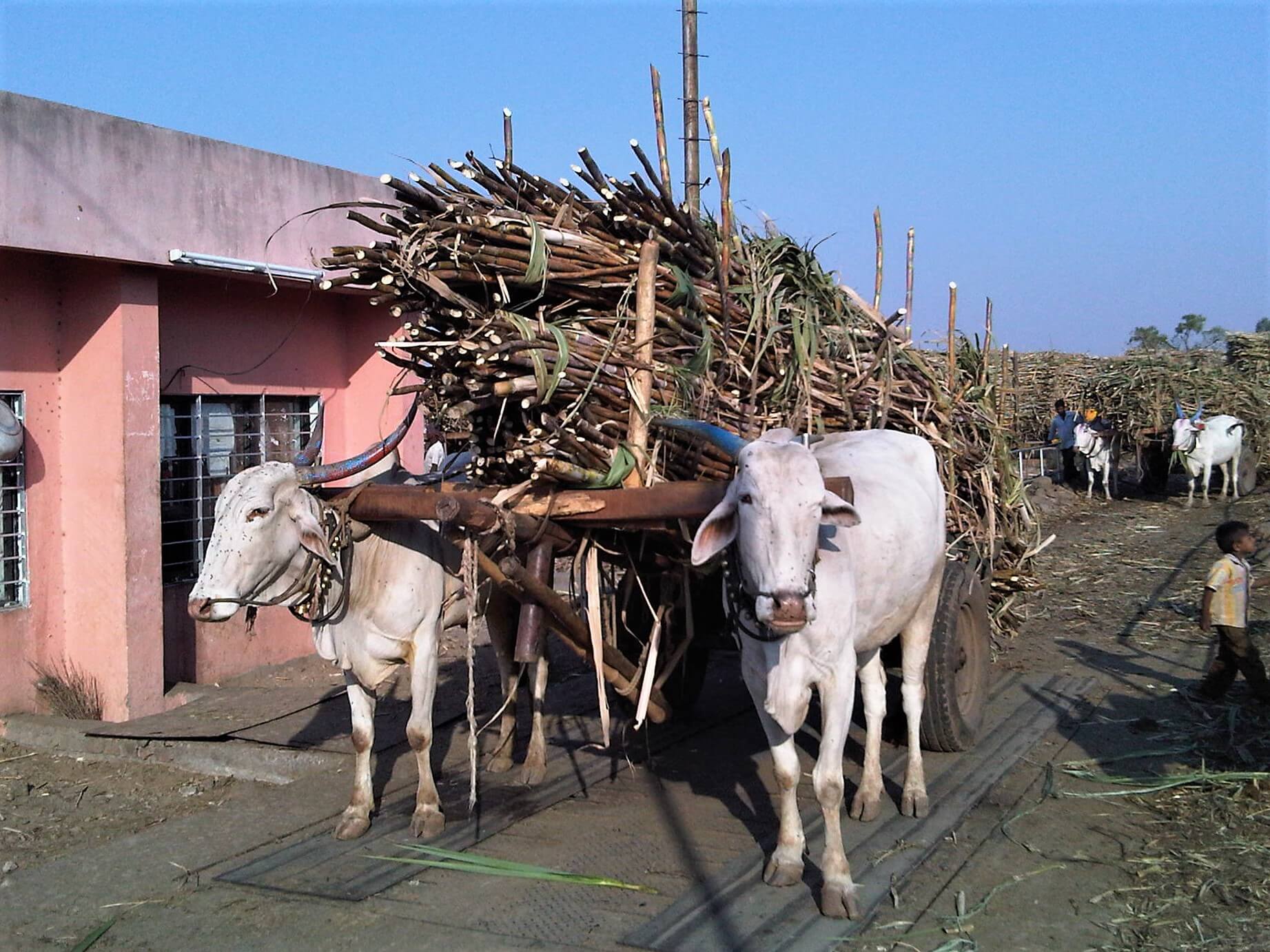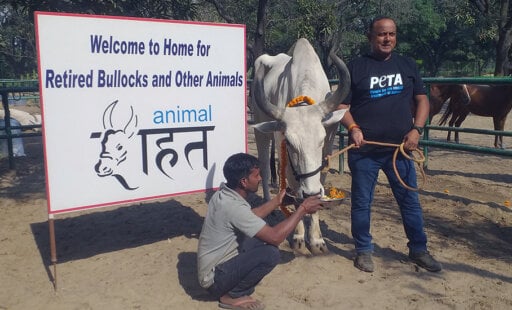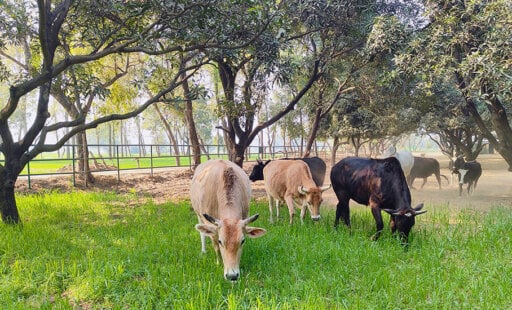In addition to Animal Rahat’s routine but vital work for animals in India, it manages mechanization programs with the goal of retiring working animals and replacing them with motorized vehicles.
Brick Kiln Mechanization Project
Because donkeys are strong but also prone to hiding injury or illness, they’re commonly exploited for hard labor. This is the case in many of India’s brick kilns. The donkeys are hit and goaded to haul enormous loads of bricks in the unrelenting sun, without breaks for food, water, or rest. Bearing these burdens leads to painful chafing wounds, injured joints, exhaustion, dehydration, and even collapse.

Animal Rahat staff members visit brick kilns to provide the donkeys with medical treatment and to meet with their owners and brick kiln operators to advocate for mechanizing the operations. They emphasize the benefits of using tractors instead of donkeys, including increased efficiency and profits. And as more brick kilns come on board, it becomes easier to persuade others to mechanize. As a result of this program, Animal Rahat has been responsible for the retirement of hundreds of donkeys who are now living at its partner sanctuary, where they’ll never be forced to labor again.
Sugar Factory Mechanization Project
Even though using trucks and tractors is much more efficient, many people in India’s sugar industry still use carts pulled by bullocks to transport sugarcane to milling factories. Not only are these animals forced to work long hours in the heat with few or no breaks to rest, they’re also denied water and food from early morning until long into the evening, and many suffer from injuries and yoke gall—painful swelling that results from the constant rubbing of an ill-fitting, heavy, wooden yoke. Sometimes, people even hang spikes under the yokes. These illegal torture devices are made of bent metal or barbed wire that stabs the bullocks if they try to turn their heads. The carts that these animals must pull are overloaded with massive piles of sugarcane, and the drivers and their families usually ride on top, too, adding to the difficulty in pulling the vehicle down rutted roads. Learn more about this project here.




